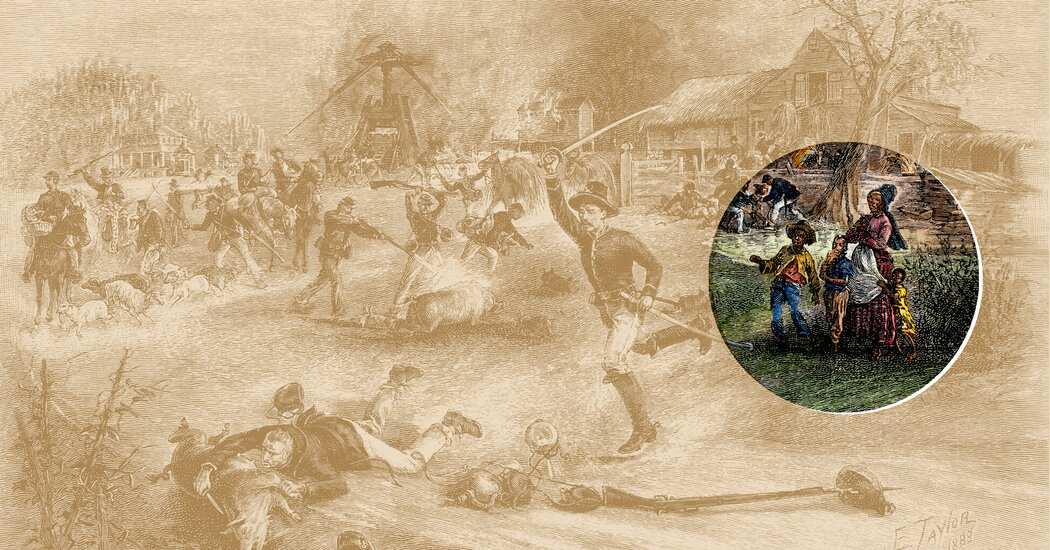Drawing extensively on Willie Lee Rose’s “Rehearsal for Reconstruction,” an influential chronicle of the Union’s early and mixed efforts to assist freed Black Americans, Parten argues that “what came after the march was as much a crucible, as much an ordeal, as the march itself.” Though Sherman triumphantly entered Savannah in December, most of the refugees never entered the city. Instead, they were sent up the coast to Port Royal, the Union outpost on the coast of South Carolina where about 15,000 freed people lived alongside Northerners who had migrated south to serve as educators and missionaries.
There, Brig. Gen. Rufus Saxton, the military governor of the Department of the South, had been ordered to take possession of all plantations previously occupied by rebels and to feed, shelter and generally care for the formerly enslaved. But as 17,000 Georgian refugees arrived, many had to be housed in rough tents, or they slept outdoors, often without blankets. At least 1,000 of them died of exposure.
In this, the second and somewhat more derivative half of his book, which is less about the march than about its aftermath, Parten largely focuses on how the “hopes and failures” of the march persisted, particularly when Sherman and Secretary of War Edwin Stanton, in Savannah, met with Garrison Frazier, a formerly enslaved pastor, who told them, “We want to be placed on land until we are able to buy it and make it our own.” Sherman’s subsequent Special Field Order No. 15 allowed freed men and women to settle on a strip of captured land that stretched from Charleston down to Jacksonville, under a provision that came to be known colloquially as “40 acres and a mule.”
Men like Edward Philbrick, one of the Northerners who came to Georgia’s Sea Islands with humanitarian intentions, purchased 11 plantations in the strip, arrogantly assuming that by employing freed people on his property, he would bring about their “elevation.” As Parten rightly observes, Philbrick represents those capitalists who wanted “to reshape the slaveholding South in the image of the North,” with its highhanded, paternalistic privatization of land.
